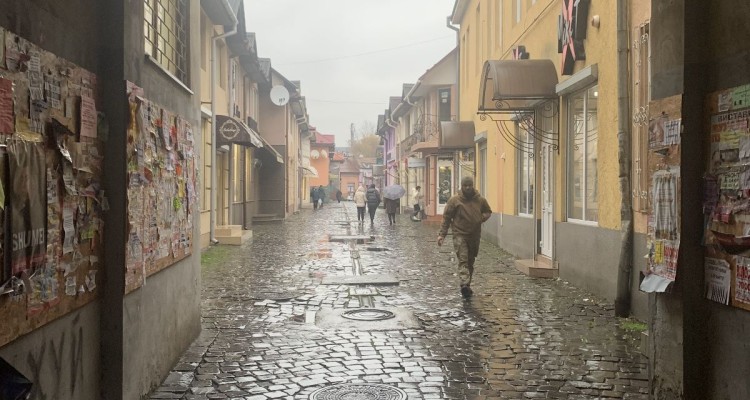After the Nazi conquest of Poland in October 1939, Hitler entrusted Hans Frank with the task of establishing the “General Government of Poland,” a territory that was soon littered with ghettos and camps – but which was nevertheless the subject of one of the most famous tourist guides of the time, the Baedeker guide. In September 1942, Frank met with Oskar Steinheil, a representative of the Baedekers, to commission him to write a version devoted to the General Government of Poland, which was published in 1943. Carole Fily examined this guide, with its extermination locations erased and its population transfers ignored…
Yeshaya Dalsace, a French rabbi from the Massorti community, recently visited Ukraine without a Baedeker guide. He took the road to Munkács (“Moukatchevo” in Ukrainian), in Transcarpathia, a few dozen kilometers from the Polish, Hungarian, Slovak and Romanian borders. Before the war, nearly 15,000 Jews lived there. Today, there are barely even a hundred of them and nothing in the city indicates their disappearance. Immersed in a strange atmosphere, Yeshaya Dalsace tells us about his journey and his meeting with about 15 people who came to Munkács, in war-torn Ukraine, to complete their conversion process to Judaism.
In an Instagram post published on March 25, Kanye West explained that, thanks to the film 21 Jump Street and its actor Jonah Hill, “[he] likes Jewish people again.” The rapper thus announced that he was giving up anti-Semitism as if he was finally giving up sugar… This is an opportunity for us to republish Daniel Solomon’s text on the emergence of an “ecumenical anti-Semitism”, which is one of the symptoms of Kanye West’s openly anti-Jewish remarks, and which combines tropes from the right with others from the left. A combination which, if it is well known in Europe, remained until now very marginal in the United States.









